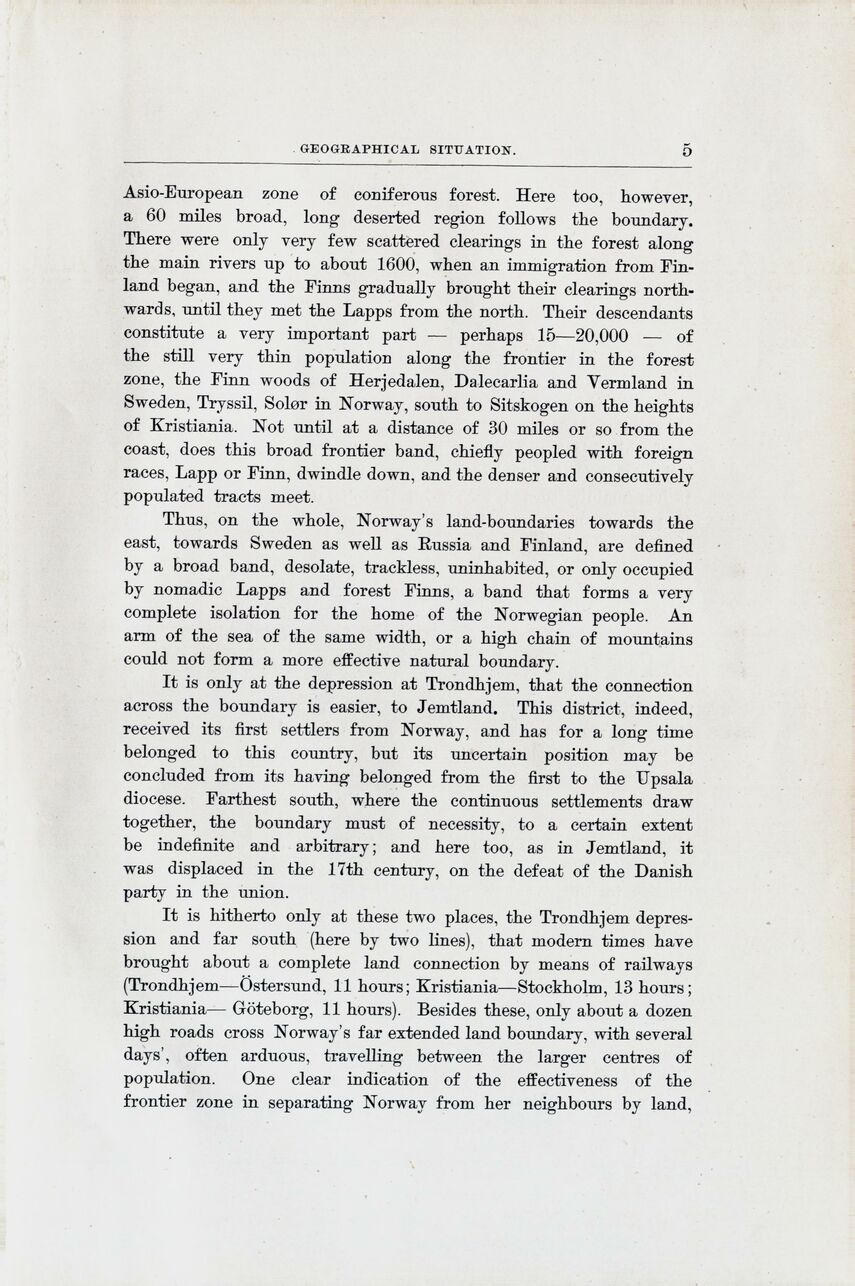
Full resolution (JPEG) - On this page / på denna sida - Geographical Situation, by Andr. M. Hansen

<< prev. page << föreg. sida << >> nästa sida >> next page >>
Below is the raw OCR text
from the above scanned image.
Do you see an error? Proofread the page now!
Här nedan syns maskintolkade texten från faksimilbilden ovan.
Ser du något fel? Korrekturläs sidan nu!
This page has been proofread at least once.
(diff)
(history)
Denna sida har korrekturlästs minst en gång.
(skillnad)
(historik)
Asio-European zone of coniferous forest. Here too, however,
a 60 miles broad, long deserted region follows the boundary.
There were only very few scattered clearings in the forest along
the main rivers up to about 1600, when an immigration from
Finland began, and the Finns gradually brought their clearings
northwards, until they met the Lapps from the north. Their descendants
constitute a very important part — perhaps 15—20,000 — of
the still very thin population along the frontier in the forest
zone, the Finn woods of Herjedalen, Dalecarlia and Vermland in
Sweden, Trvssil, Solør in Norway, south to Sitskogen on the heights
of Kristiania. Not until at a distance of 30 miles or so from the
coast, does this broad frontier band, chiefly peopled with foreign
races, Lapp or Finn, dwindle down, and the denser and consecutively
populated tracts meet.
Thus, on the whole, Norway’s land-boundaries towards the
east, towards Sweden as well as Russia and Finland, are defined
by a broad band, desolate, trackless, uninhabited, or only occupied
by nomadic Lapps and forest Finns, a band that forms a very
complete isolation for the home of the Norwegian people. An
arm of the sea of the same width, or a high chain of mountains
could not form a more effective natural boundary.
It is only at the depression at Trondhjem, that the connection
across the boundary is easier, to Jemtland. This district, indeed,
received its first settlers from Norway, and has for a long time
belonged to this country, but its uncertain position may be
concluded from its having belonged from the first to the Upsala
diocese. Farthest south, where the continuous settlements draw
together, the boundary must of necessity, to a certain extent
be indefinite and arbitrary; and here too, as in Jemtland, it
was displaced in the 17th century, on the defeat of the Danish
party in the union.
It is hitherto only at these two places, the Trondhjem
depression and far south (here by two lines), that modern times have
brought about a complete land connection by means of railways
(Trondhjem—Östersund, 11 hours; Kristiania—Stockholm, 13 hours;
Kristiania—Göteborg, 11 hours). Besides these, only about a dozen
high roads cross Norway’s far extended land boundary, with several
days’, often arduous, travelling between the larger centres of
population. One clear indication of the effectiveness of the
frontier zone in separating Norway from her neighbours by land,
<< prev. page << föreg. sida << >> nästa sida >> next page >>